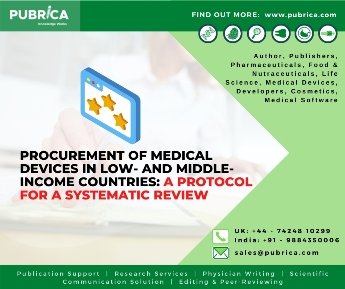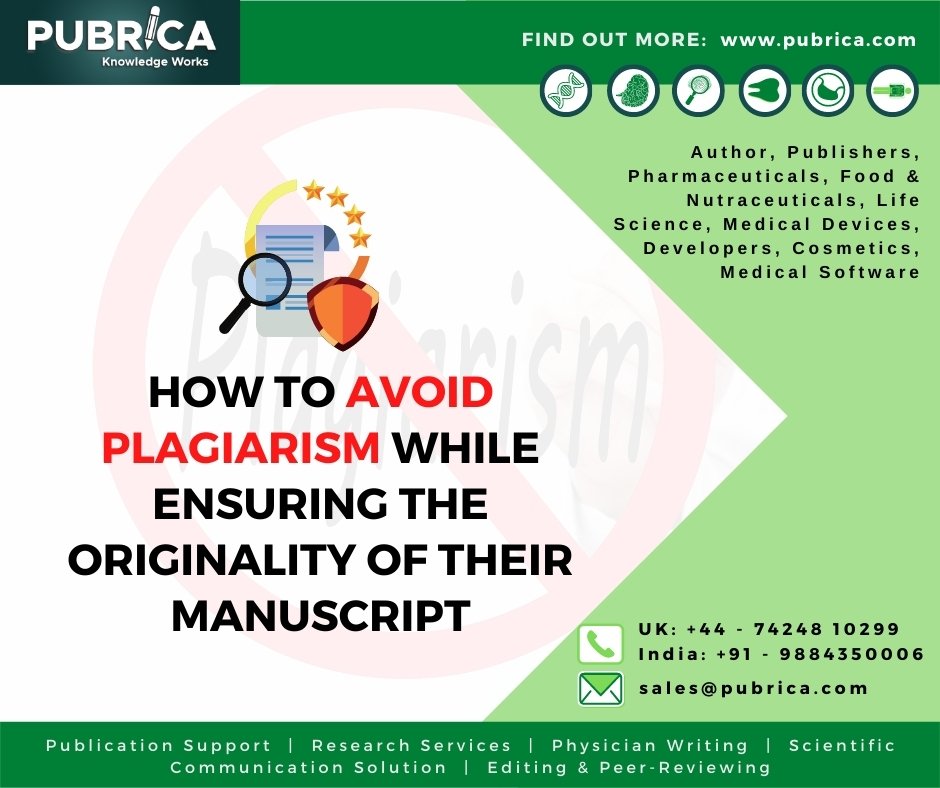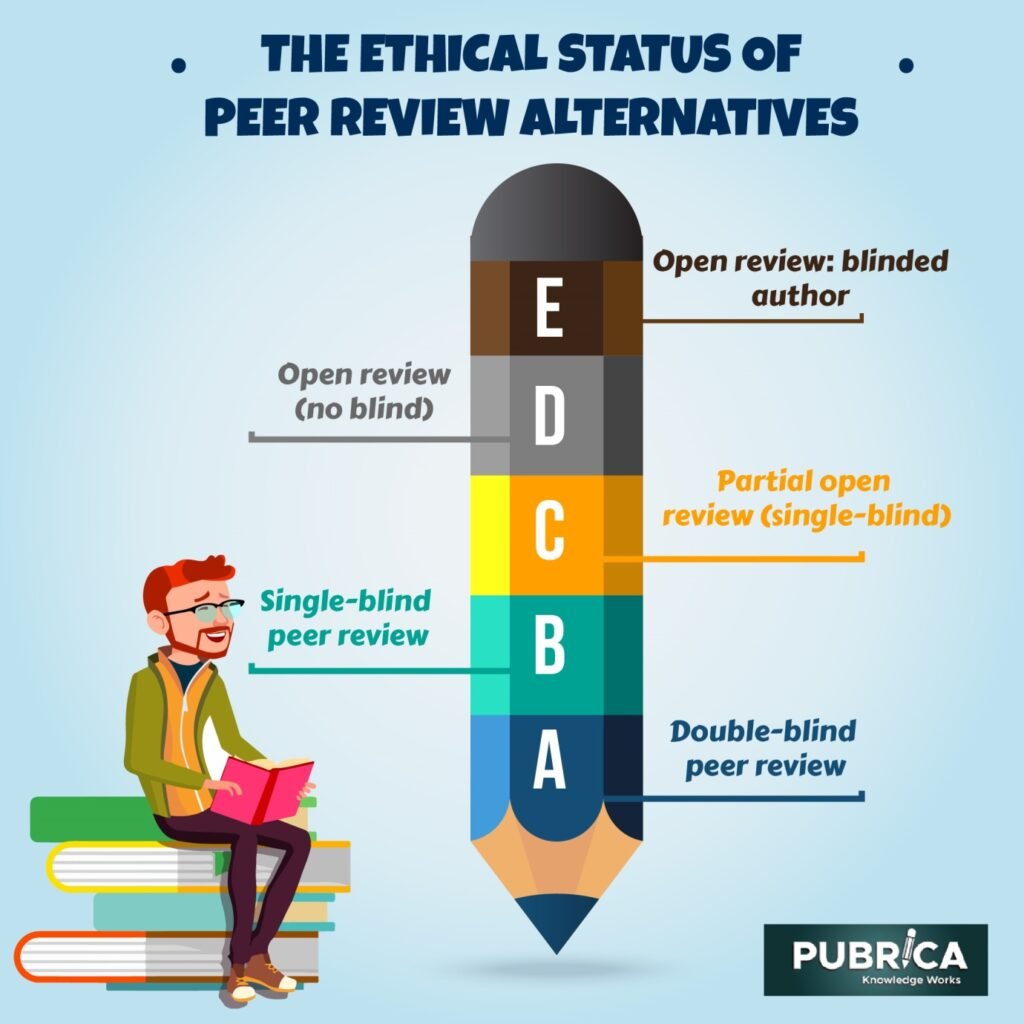
Procurement of Medical Devices in Low and Middle Income Countries Review
August 23, 2021
How to avoid Plagiarism while ensuring the originality of their manuscript
September 8, 2021In brief
Peer review is the foundation of the publishing system and is at the core of the editorial process. The quality of the peer reviewers determines peer-review quality. For peer review, specific formal and ethical writing requirements are required. Throughout the review process of any submitted manuscript in any publication, these criteria should be maintained (1).
Introduction
Functionality and quality of peer review
Peer review is now nearly universal in scholarly publications, and it is regarded as a necessary component of the publishing process. There is no agreement on what peer review is, what it is for, what distinguishes a ‘good’ review from a ‘poor’ review, or how even to begin to define ‘quality review. Some publishers may have previously acquired, processed, and analysed peer review data internally to monitor and improve their processes. This may be a significant file drawer issue, as such information is only of little utility if solely utilised for personal reasons. Empirical data on a variety of aspects of the peer review process might be obtained, with different degrees of difficulty, to understand better how it works, including (2):
- The number of referee reports per article, how many rounds of peer review is there?
- Length of referee reports
- During the evaluation process, was code, data, and documents made available?
- Was any code, data, or materials accessible for inspection/analysis during the process?
- Who decides whether the reports should be available to the public when these choices are made, and what should be contained in them? (e.g. editorial comments)
- The percentage of papers that receive “desk rejects” versus “peer review rejections.”
- What happens to submissions that are submitted?
Table 1: Journal peer-review survey data (3)
| % Yes | SE | |
| A reviewer was ineffectual | 61.8 | 3.3 |
| A reviewer was influenced | 50.5 | 3.4 |
| A reviewer required you to include avoidable references to his/her journal (s) | 22.7 | 2.8 |
| Comments from reviewers included private outbreaks | 17.7 | 2.6 |
| A reviewer behind the review so that he/she could publish an article on the same topic | 9.6 | 2.0 |
| A reviewer breached confidentiality | 6.8 | 1.7 |
| A reviewer used your ideas, data or methods without your permission | 4.5 | 1.5 |
Ethical Responsibilities of Editors and Reviewers
The Committee on Publishing Ethical (COPE) was established in 1997 to address research and publication ethics violations and provide a code of conduct for biomedical journals. It provides standards for writers, editors, editorial board members, readers, journal owners, and publishers to establish the best practice in scientific publishing ethics. They include research design and ethical approval, data analysis, authorship, conflicts of interest, peer review, redundant publishing, plagiarism, and editor responsibilities, as well as media relations and advertising(4).

THE ETHICAL STATUS OF PEER REVIEW ALTERNATIVES
Double-blind peer review
Double-blind reviewing isn’t any better than single-blind reviewing in any manner. The reviewer is still aware that he is working with competition and may feel compelled to correct all of the issues that have been noted. The double blindness does not affect the incentives for dishonest behaviour or the power to gain an advantage through the review system.
Single-blind peer review
Peer review has all of the ethical issues that peer review has, plus one: the peer reviewer will be certain of the reviewed identity and may pursue a personal campaign based on past enmity. If the evaluated person is unlucky, his or her work will be reviewed by someone who actively dislikes him or her, resulting in an extremely bad evaluation. Personal assaults in peer reviews were reported by 17.7% of respondents in the poll, as mentioned earlier on ethical issues with peer review.
Partial open review (single-blind)
The term “partial open review” refers to a review method in which the reviewer stays anonymous, but the review is made public. The reader of an article is aware of the reviewer’s viewpoints and may determine if the review is fair. This is an improvement over the current method, which keeps both reviews and reviewers hidden.
Open review (no blind)
An open peer to peer review system has several advantages, one of which is that if a reviewer engages in unethical activity, they will face professional consequences. An open peer review is one in which neither the reviewer nor the reviewed are anonymous, and the reviews are made public.
Open review: blinded author
The reviewer is known to the reviewer, but the review is unknown to the reviewer in an honest review. This makes it far less likely that the reviewer will write a biased review as part of retribution. Unless textual evidence indicates otherwise, the reviewer cannot be confident that he is criticising the work of someone he hates. It’s the polar opposite of the typical evaluation, and it offers its own set of benefits (5).
Conclusion
Peer review is a complex and multifaceted process, and it’s quite conceivable that we overlooked some crucial aspects. Peer review is not a stand-alone mechanism but an integral element of a complex, changing ecological system. It’s possible to apply what has been done to other peer reviews, such as grants and clinical trials.
References
- Mavrogenis, Andreas F., Andrew Quaile, and Marius M. Scarlat. “The good, the bad and the rude peer-review.” International orthopaedics 44.3 (2020): 413-415.
- Tennant, Jonathan P., and Tony Ross-Hellauer. “The limitations to our understanding of peer review.” Research integrity and peer review 5 (2020): 1-14.
- Cawley, Valentine. “Is peer review unethical?.” International Conference on Social Science and Humanity. Vol. 5. 2011.
- Jain AK. Ethical issues in scientific publication. Indian J Orthop. 2010;44(3):235-237. doi:10.4103/0019-5413.65133
- Rockwell, Sara. “Ethics of peer review: a guide for manuscript reviewers.” URL: http://ori. dhhs. gov/education/products/yale/prethics. pdf.[Accessed on: 01-09-2013] (2006).
